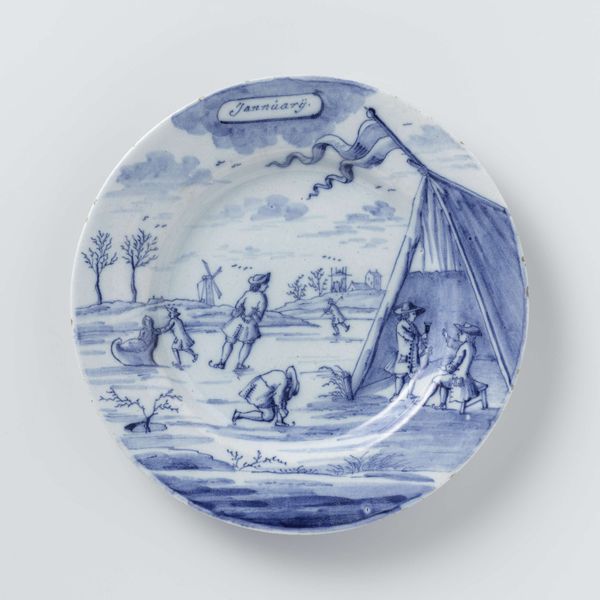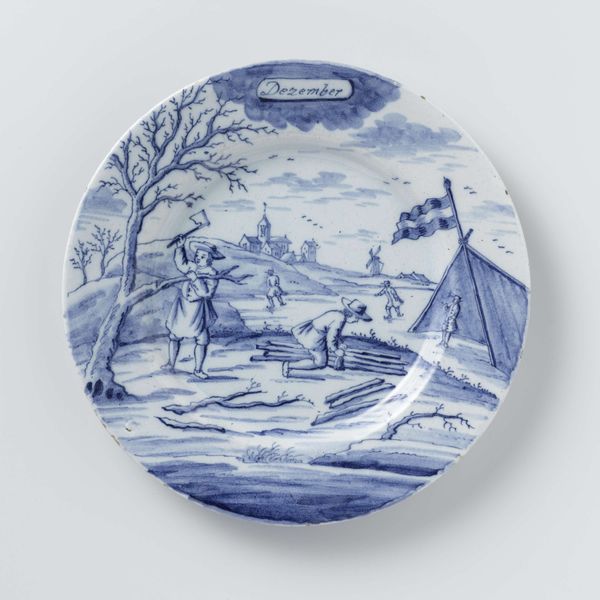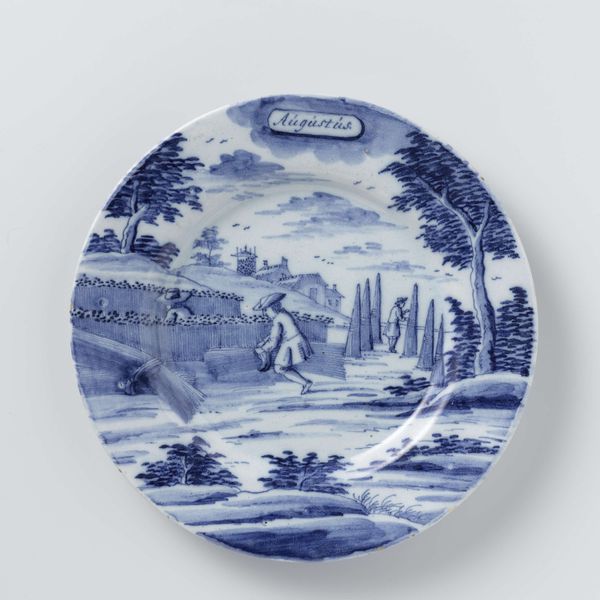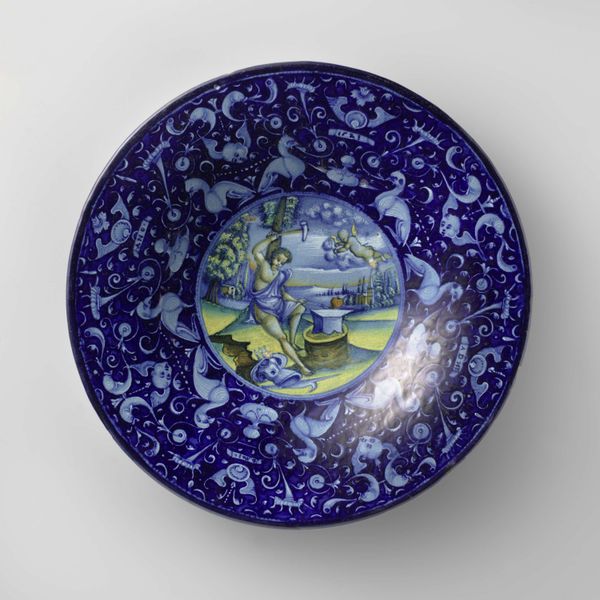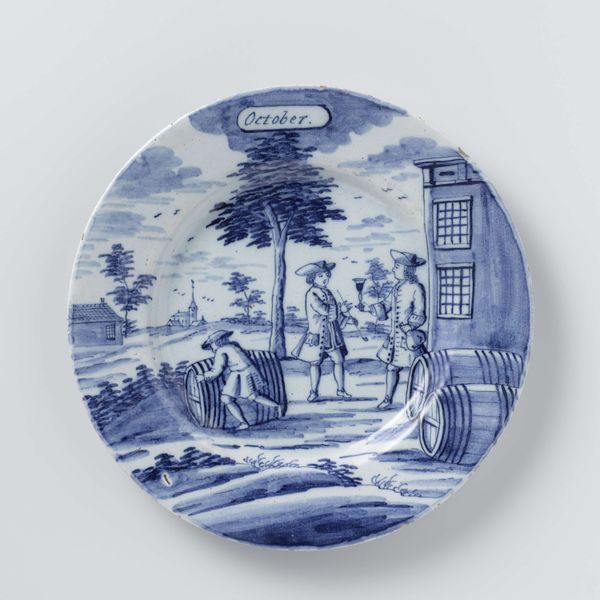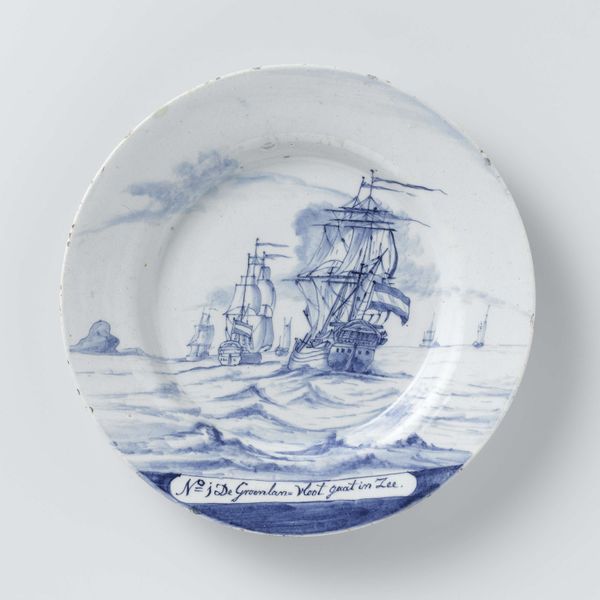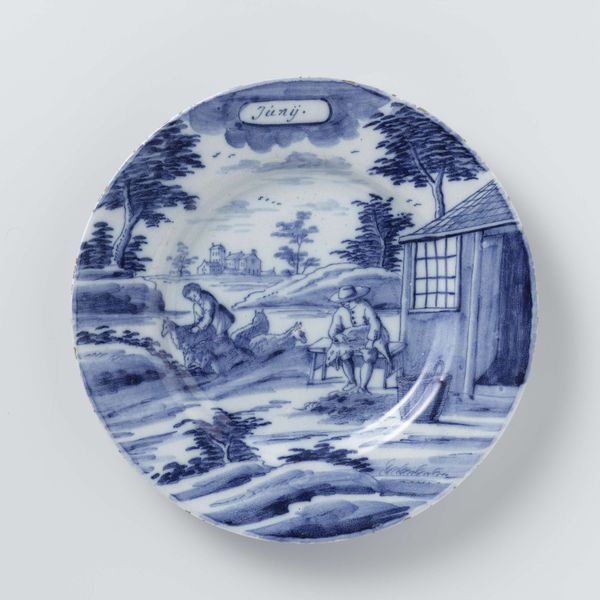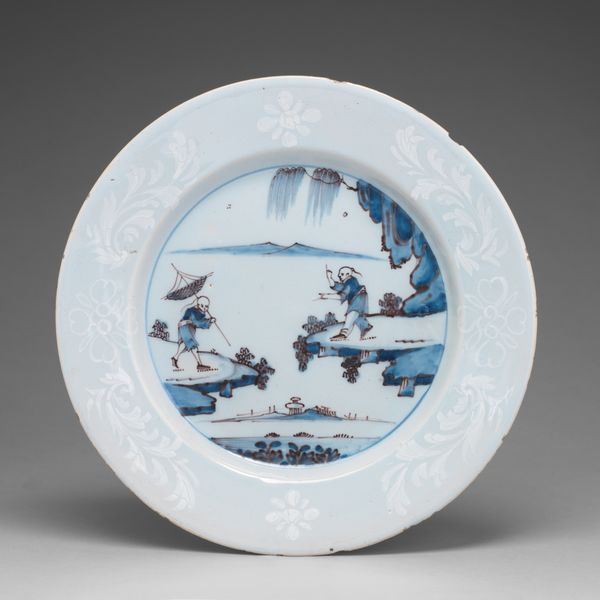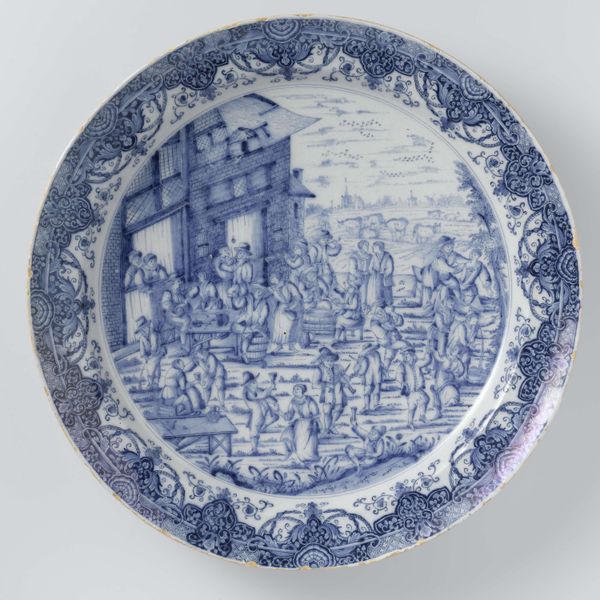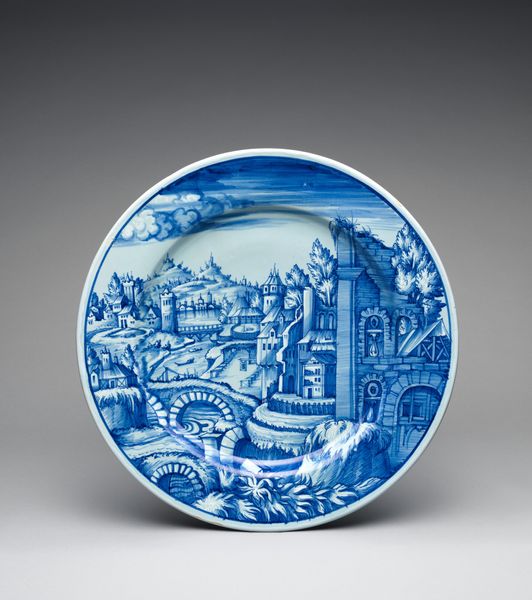
ceramic
#
dutch-golden-age
#
landscape
#
ceramic
#
ceramic
#
genre-painting
#
decorative-art
Dimensions: Diameter: 9 1/16 in. (23 cm)
Copyright: Public Domain
Curator: Here we have a tin-glazed earthenware plate, believed to be from De Porceleyne Bijl, a pottery manufactory in Delft. Its creation dates sometime between 1759 and 1793. Editor: My first impression is one of quaintness and chilly simplicity; the blue monochrome rendering imparts a wintry feeling, like a sketch of a long-ago December. Curator: The landscape depicted embodies genre painting traditions, detailing daily life. Note the arrangement of the figures, balanced on either side, a scene of communal winter preparation for gathering fire wood, set against architecture in the distance. Above, you can read “December”, indicating this plate as a piece of a set that maps to the months of the year. Editor: And in thinking of this visual arrangement in historical context, one can speculate on the social implications within this so-called genre scene. Consider that depictions of labor during the rise of industrial capitalism are fraught with ideology, portraying perhaps a mythic, collective identity while often erasing socio-economic divisions. This is a moment when genre painting often overlooked realities by presenting harmonic idealism. Curator: But the rendering, while stylized, delivers some interesting contrasts; the detailed rendering of frozen earth in the foreground gives way to less precise backgrounds—consider also the use of varied cross hatching to define texture throughout the composition. This keeps your eye interested as it moves. The formal organization gives the artwork stability. Editor: Yet the very materials used to create the plate come with a complicated and perhaps dark history. The pursuit of these very raw materials often relied on extraction through exploitative labor systems. What appears idyllic here is situated on real-world inequalities, the erasure of the hands that extracted the resources, processed the material, or toiled over it. Curator: I suppose, by dwelling upon these aspects, you seek to rupture any conventional reading based on sentimentality, or even formal assessment, replacing it with awareness of a brutal foundation—illuminating previously unexamined facets, giving greater perspective on even a simple Delftware plate like this. Editor: Exactly! My aim is that by questioning what is included, we remain inquisitive of what isn’t immediately apparent. By actively acknowledging this, our reading becomes meaningfully grounded within broader social landscapes.
Comments
No comments
Be the first to comment and join the conversation on the ultimate creative platform.
